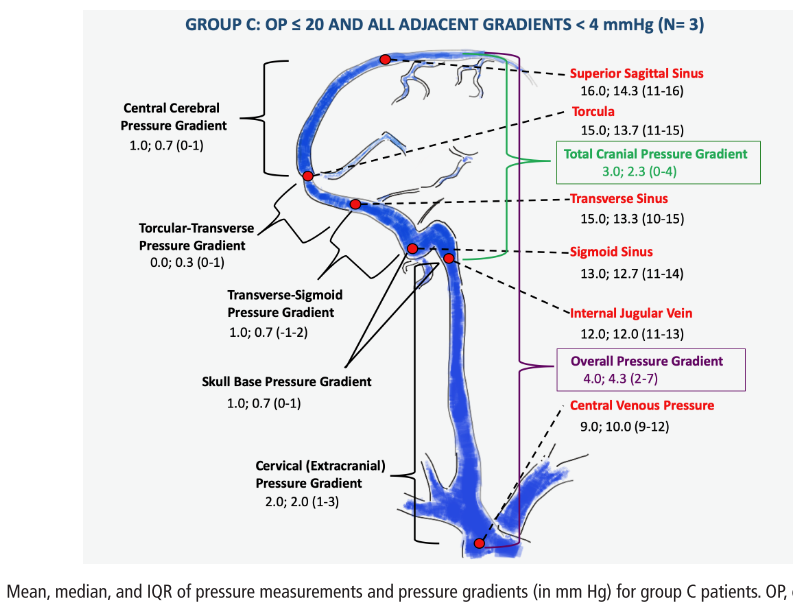On Friday I had a cerebral angiogram/venogram to check my intracranial + jugular pressures as part of my workup for Vascular Eagle’s Syndrome. While I got the report back quite quickly, it didn’t actually have any reference ranges or norms, so I had no idea how to judge my own results.
So naturally, because I’m me, I spent the whole weekend trying to find the answers. I’ve got to say, I was surprised by how difficult it was. But, ultimately, I did find the answers I was looking for, and so I’m going to share them here so other folks don’t have to lose days to hunting down this info too!

from: A descriptive study of venous sinus pressures and gradients in patients with idiopathic intracranial hypertension
Some notes:
“The cerebral venous pressure gradient is defined as a difference of ≥8 mmHg across the stenotic segment by venographic manometry. ” (source)
“Although the jugular veins were previously thought to be the predominant draining pathway [of the brain] [23], anatomical recent study-findings have demonstrated that this role is confined to the supine position; redirection of venous flow to the vertebral veins occurs in upright-position [92].” (source)
“In the sitting or head-elevated position, cerebral venous blood exists through the internal jugular veins, emissary veins and vertebral venous plexus in humans.[…] during expiration, high-intrathoracic pressure causes a major proportion of blood to drain via the vertebral plexus” (source)
“Several reports have indicated that the jugular venous pressure may underestimate the right atrial pressure.” (source)
“Firstly, if venography is accompanied by pressure gradient measurements, the pressure measurement in the internal jugular vein may not be reliable (jugular valve is potentially kept open by the diagnostic catheter – possibly reducing or eliminating any cross- valve pressure differential).” (source)
Reference:
- Anatomical Assessment of Cerebral Venous System by 3D phase contrast MR Venography – M. Jakhar, K. Chaturvedy, et al. (2019, Journal of Medical Science and Clinical Research)